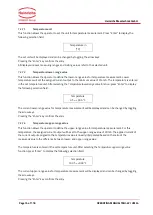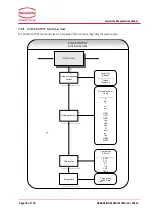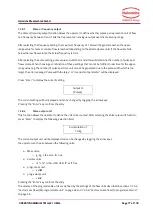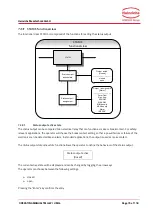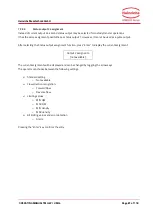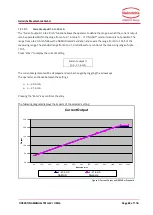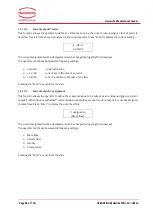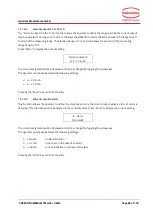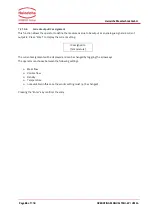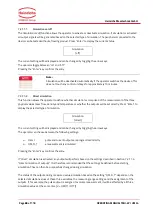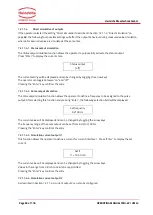
Heinrichs Messtechnik GmbH
OPERATING MANUAL TMU-W / UMC4
Page 77 of 118
7.2.8.1
Pulse or frequency output
The Pulse or frequency output function allows the operator to define whether pulses per represent a unit of flow
or a frequency between 0 and 1 kHz that represents an analogue output over the measuring range.
After selecting the frequency setting, the maximum frequency of 1 kHz will be generated when the upper-
range value for mass or volume flow is reached (depending on the selected pulse unit). If the flow rate falls
below the low flow volume, the actual frequency is 0 Hz.
After selecting the pulse setting, pulse value and unit the transmitter will determine the number of pulses per
flow volume. When choosing a combination of these settings that cannot be fulfilled in real time for the upper-
range value (e.g. the number of pulses per time unit cannot be generated due to the pulse width which is too
large), the error message “Pulse width too large” or “Inconsistent parameter” will be displayed.
Press “Enter” to display the current setting:
Output of
[Pulses]
The current setting will be displayed and can be changed by toggling the arrow keys.
Pressing the “Enter” key confirms the entry.
7.2.8.2
Pulse output unit
This function allows the operator to define the unit to be counted. After selecting the Pulse output unit function,
press “Enter” to display the following selection field:
Accumulation of
1.0 kg
The current output unit will be displayed and can be changed by toggling the arrow keys.
the operator can choose between the following units:
Mass units:
o
g, kg, t, lbs, ston, lton, oz
Volume units
o
m³, cm³, l, USG, UKG, USB, ft³, acft, floz
progr. mass unit:
o
xxQM
prog. volume unit
o
xxQV
Pressing the “Enter” key confirms the entry.
The valency of the programmable units are defined by the settings of the flow units described in sections 7.2.5.2,
“Factor mass flow QM programmable unit” on page 62 and 7.2.5.8, “Factor volume flow QV programmable unit”
on page 65.












